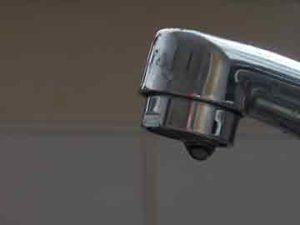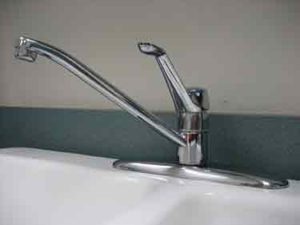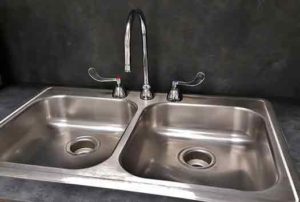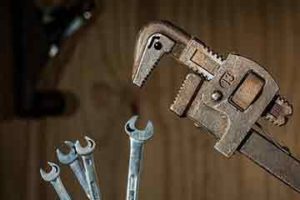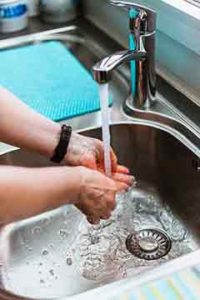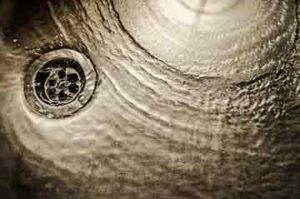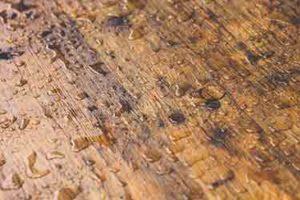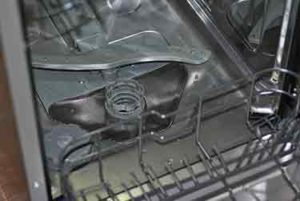Faucet leaks in a rental property are inevitable and at some point, they will happen. Quite frequently, a faucet leak is not considered a big problem because it doesn’t cause flooding. But a leaking faucet can waste an unbelievable amount of water. One faucet, dripping at the rate of one drop per second, can waste 250 gallons of water a month or 3,000 gallons a year.
That is money your tenant does not have to spend, says Taylor Street Management, especially when you consider that a leaky faucet is not hard to fix. A faucet is not a complicated device. All you need to fix the leak is a basic understanding of how faucets work, a few tools, and some patience.
In this guide, we explain the steps you should take to fix a leaky faucet in your rental property.
What causes faucet leaks?
Basically, faucets are an assembly of parts designed to hold water back or release it, as needed. The major internal components of faucets are the O-ring, valve seat, washer, and gasket. If any of these components are damaged, the faucet will leak. The main causes of a leaking faucet are loose or worn-out O-ring, worn-out washer, or corroded valve seat.
Problems with faucet components are unavoidable; they are the result of corrosion and aging. Sometimes you may also have problems with the metal or plastic parts of the faucet. But these kinds of issues are less common. To fix a leaking faucet, the first step is to know which of the four types of faucets you are dealing with.
Types of faucets
- Compression faucets: These have separate handles for hot and cold water. You have to tighten the handles to turn off the water. They are the oldest and least expensive types of faucets. Compression faucets are prone to leak.
- Cartridge faucets: Similar to compression faucets but slightly easier to operate. This has a removable cartridge with holes that align with the water inlet. The O-ring for this type of faucet is located on the cartridge.
- Ball-valve faucets: This is the most common faucet used in kitchen sinks. They are less common in bathrooms. Ball-valve faucets have springs and gaskets in the water inlet port which must be replaced every few years.
- Ceramic disk faucets: The newest and most reliable faucets in the market. They are the least prone to leaks because the disk valve is firmly screwed to the valve seat. They are also the most expensive to repair if damaged.
How to fix the types of leaky faucets
The steps depend on the type of faucet, but for all faucets, the first step is to shut off the water supply. After that, you have to disassemble the faucet.
How to fix compression faucets
There are usually two possible causes when a compression faucet leaks. The first and more common one is due to the rubber washer inside the faucet being worn out. This washer is located on the end of the faucet valve stem. A compression faucet may also leak from the handle. If this happens, the packing inside the handle needs to be replaced.
To fix the faucet:
- Unscrew and pull off the handle
- Using a wrench, unscrew, and remove the retaining nut
- Remove the valve and unscrew the washer at the end of it
- Replace the washer
- If the leak is from the handle, replace the packing inside the retaining nut
- Reassemble
How to fix cartridge faucets
Cartridge faucets may be single-handled or double-handled. The procedures for fixing leaks inside both types of cartridge faucets are essentially the same. A double-handled cartridge will naturally take more time. To fix the leaks, it is best to replace all the rubber parts along with the O-rings. If the cartridge itself is damaged, it should be replaced along with the gaskets.
Here is how to do it:
- Remove the handle and unscrew the cartridge retainer
- Pull out the cartridge
- If the faucet has a retaining pin rather than unscrewing nut, you will need needle-nose pliers
- Use a flathead screwdriver to get the gasket out of the water inlet and replace it with new ones
- Grease all rubber parts before you replace them
- How to fix ball-valve faucets
These are very easy to repair but their replacement parts will vary according to the model of your faucet.
To repair a ball-valve faucet:
- Remove the handle with a hex wrench or screwdriver
- Lift out the ball valve after you have removed the bonnet
- Check the valve for damage. Replace if it is damaged
- Using a flathead screwdriver, lift the gaskets and springs out of the inlet hole
- Insert the new gasket after you have greased it and inserted the springs
- Grease the ball and return it to its place
How to fix ceramic disk faucets
These will rarely leak, but if they do you should replace the disk and rubber gaskets.
To do that:
- Unscrew the disk
- Replace the gasket
- Insert the new disk
- Screw it into place
